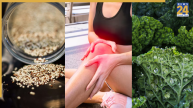As the seasons change, so does our susceptibility to viral infections. Whether it’s transitioning from the warmth of summer to the chill of autumn or the cold of winter to the blossoming spring, our bodies often struggle to adapt to the shifting weather conditions. During these transitional periods, we become more vulnerable to various illnesses, including colds, flu, and now more than ever, viral infections like COVID-19. One of the simplest and most effective ways to protect ourselves is by practicing proper hand hygiene.
Changing Weather and Increased Risk
The transition from one season to another often brings unpredictable weather patterns, with fluctuations in temperature, humidity, and even air quality. These changes can weaken our immune systems, making us more susceptible to viral infections. During these transitional phases, we should be extra vigilant in taking preventive measures to safeguard our health.
Hand Hygiene: A Vital Defense
Proper hand hygiene is a fundamental defense against viral infections. Many viruses are transmitted through contact with contaminated surfaces and then entering our bodies when we touch our face, mouth, or eyes. Regular handwashing is a simple yet powerful way to break this cycle.
Read More: Supercharge Your Health: Magnesium Deficiency Signs And Fixes
The Right Way to Wash Your Hands
Wet Your Hands: Start by wetting your hands with clean, running water. The temperature of the water doesn’t matter; it’s the duration and technique that count.
Apply Soap: Apply enough soap to cover all hand surfaces. Be sure to use a soap that lathers well and has antibacterial properties if possible.
Scrub Thoroughly: Rub your hands together, creating a lather. Scrub all parts of your hands, including the back of your hands, between your fingers, and under your nails. Don’t rush this step; spend at least 20 seconds washing your hands.
Don’t Forget Your Wrists: Ensure you wash your wrists as well. These are often neglected but are common areas for germs to hide.
Rinse Thoroughly: Rinse your hands under clean, running water, allowing the soap and germs to wash away.
Dry Properly: Dry your hands with a clean towel or air dryer. Ensure they are completely dry, as damp hands can harbor germs.
When to Wash Your Hands
- Before and after eating or preparing food
- After using the restroom
- After coughing, sneezing, or blowing your nose
- After touching potentially contaminated surfaces (doorknobs, handrails, shopping carts)
- After being in a public place
- After caring for someone who is sick
- Before and after providing medical care
- After handling pets and their waste
In conclusion, changing weather can pose an increased risk of viral infections, and it’s our responsibility to protect ourselves and others. Proper hand hygiene is a simple yet crucial defense against these threats. By following the right handwashing techniques and incorporating it into our daily routine, we can significantly reduce the risk of contracting or spreading viral infections. Let’s remember that clean hands are the first line of defense against changing weather and the viruses that come with it.













